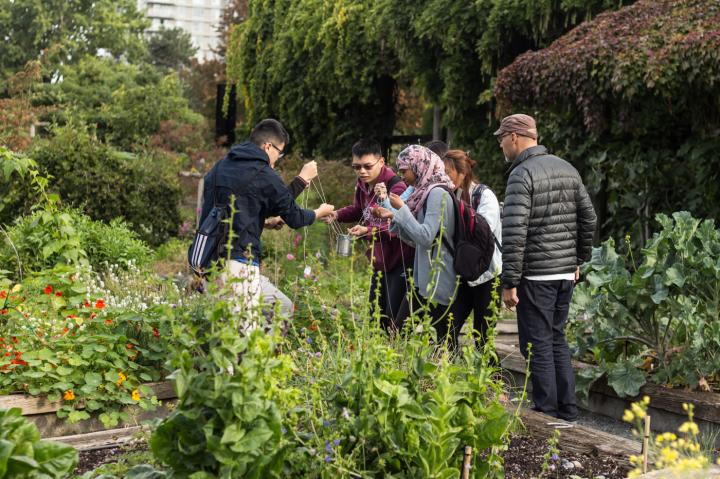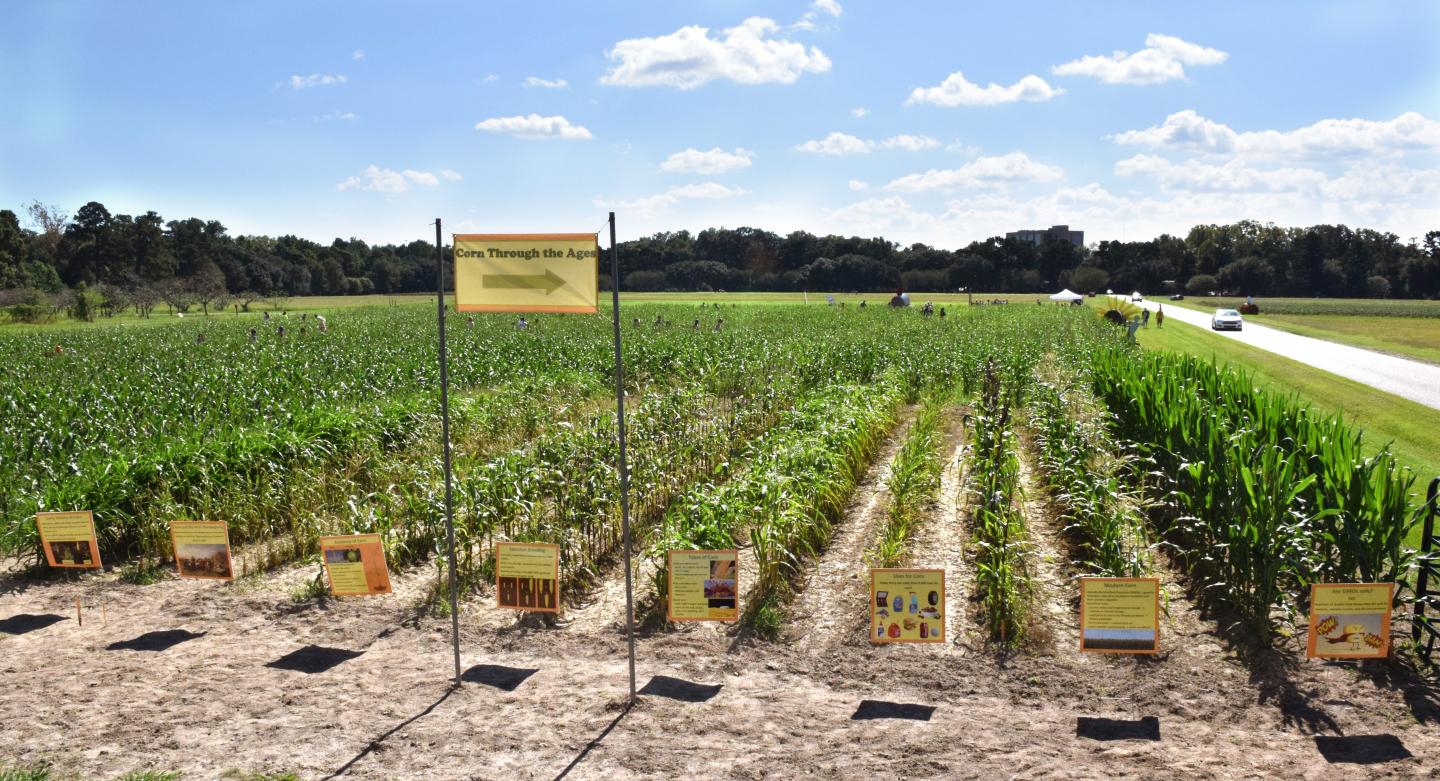Plant blindness, the lack of awareness of plants and their importance, is addressed by botanical gardens and agricultural farms.
By Neha Jain (@lifesciexplore)
What was the last plant you saw? Have you ever seen a grain of wheat? How many varieties of rice are there? Although many of us desire a green environment, more and more people, especially urban dwellers, are becoming oblivious to the plants around them—so much so that just over two decades ago, researchers even coined a term for this phenomenon: “plant blindness.”
Much of the food we eat today is the result of thousands of years of plant cultivation and breeding by our ancestors. As a result, our future survival is tied to our knowledge of food production.
Now, researchers are proposing to address the issue through something we all depend on to survive: food plants. “With rapid urbanization and the loss of agricultural knowledge and our connectivity to land, the younger generation has no clue where food comes from,” Sarada Krishnan tells Science Connected. Krishnan is Director of Horticulture and Center for Global Initiatives at Denver Botanic Gardens and the lead author of a recent commentary in Plants, People, Planet. “Since food is a necessity, we suggest that to cure general plant blindness, we need to start with food and curing agricultural plant blindness.”


Botanical gardens can play a crucial role in raising public engagement by collaborating with academic institutions, agricultural research organizations, and nonprofits, says the team of researchers, who outline many cases where such partnerships have been fruitful in tackling the issue of plant blindness.
Engaging with plant exhibits
Harnessing the power of botanical gardens is essential to this endeavor. Over 3,500 public gardens are located around the world, harboring a third of Earth’s plant species and attracting more than 250 million visitors annually. They also employ around 60,000 experts in horticulture, taxonomy, conservation, and public education who are poised to lead in educating the importance of plants and conservation of biodiversity.
One way botanical gardens can educate visitors is through plant-based exhibits. In 2015, the United States Botanical Garden in Washington, DC, held a wheat exhibit, “Amber Waves of Grain,” which recreated the history of American Nobel Prize winner Norman Borlaug’s Mexico-based breeding program. The exhibit demonstrated the 10,000-year history of wheat breeding by showcasing both ancient wheat varieties and six commercial modern wheat classes. It also highlighted the problem of weeds in farming by displaying a 20-foot statue of a wheat plant emerging from weeds. Krishnan’s team says that the exhibit, viewed by over 600,000 visitors, was only possible because of the support of myriad partnering institutions and researchers. For example, seeds to grow the ancient wheats were provided by researchers at Cornell University, and scientists from the United States Department of Agriculture in Beltsville, Maryland, shared their expertise.
Institutions typically end up working in isolation, but Krishnan says that “we can go beyond our silos and work collaboratively with our colleagues in other institutions.” Such collaborative approaches should embrace diversity and inclusion, she asserts. “Our goal is to reach a diverse audience of all ages, ethnic backgrounds, races, mobility and accessibility, economic status, etc. Not only do we want to diversify our audiences, but also make them feel welcome through inclusive programming.”
Demonstration farms sprout awareness
Plant exhibits, the team suggests, should be accompanied by sensory and hands-on experiences to enhance learning. This is where researchers can tap into the senses by enabling visitors to taste, touch, and smell plants. One initiative by Cornell Botanic Gardens offers vegetable garden tasting tours with different themes twice a year. In 2018, visitors were encouraged to compare and contrast the smell, structure, and taste of food plants from different plant families.


Row crops—corn, soybeans, wheat, and others—are often processed into different forms such as flours, concealing their vegetative form. As a result, the commentary authors recommend including agriculture crop demonstration farms as a tool in educating the public on how their food is cultivated. The team gives the example of a corn demonstration plot, “Corn through the Ages,” part of the annual Corn Maze event at Louisiana State University (LSU) AgCenter Botanic Gardens, as shedding light on the history and genetic variation of the plant. The plot consisted of eight lines of ornamental corn planted in rows, illustrating the unique varieties of corn such as popcorn, dent corn, and flint corn, among others. Again, this demonstration farm was the result of a successful collaboration between botanical gardens, faculty of LSU AgCenter, graduate students, and seed companies.
Education combats plant blindness
Demonstration farms can explore different themes such as the diversity of crop varieties, how crops were domesticated, and the anatomy of plants. Krishnan also stresses the importance of crops cultivated by Indigenous peoples and how they spread across the world. “We are losing wild varieties of food plants as well as the Indigenous knowledge associated with them due to rapid urbanization,” warns Krishnan. “We need to make preservation and use of these ‘orphan crops’ a priority, and botanic gardens can play a role in this through displays, programs, and education.”
Although Krishnan admits that “funding and human resources are always a challenge for botanic gardens,” she optimistically asserts that “we all need to find ingenious ways to convey our messages to the public, and this can be done.”
This commentary was published in the journal Plants, People, Planet.
Feature image: photo taken by Garry Knight at Ventnor Botanic Garden, Isle of Wight.
Reference
Krishnan, S., Moreau, T., Kuehny, J., Novy, A., Greene, S. L., Khoury, C. K. (2019). Resetting the table for people and plants: Botanic gardens and research organizations collaborate to address food and agricultural plant blindness. Plants, People, Planet. doi.org/10.1002/ppp3.34
—Neha Jain is a freelance science writer based in Hong Kong who has a passion for sharing science with everyone. She writes about biology, conservation, and sustainable living. She has worked in a cancer research lab and facilitated science learning among elementary school children through fun, hands-on experiments. Visit her blog Life Science Exploration to read more of her intriguing posts on unusual creatures and our shared habitat. Follow Neha on Twitter @lifesciexplore.

